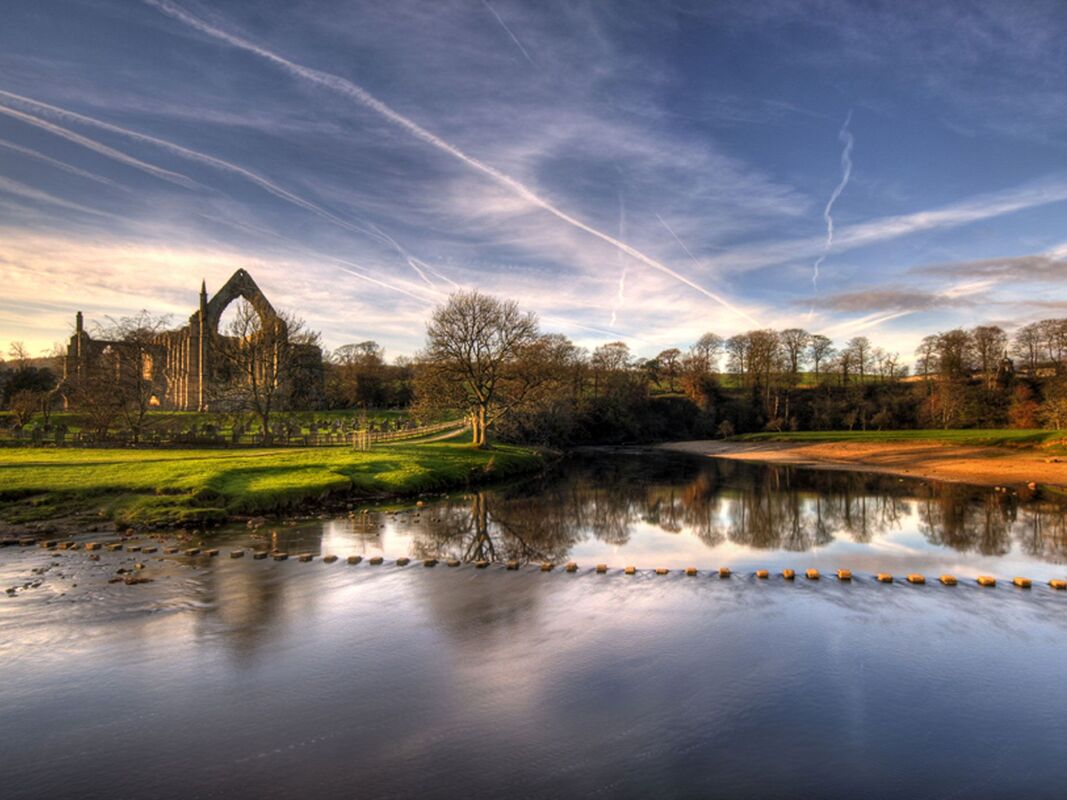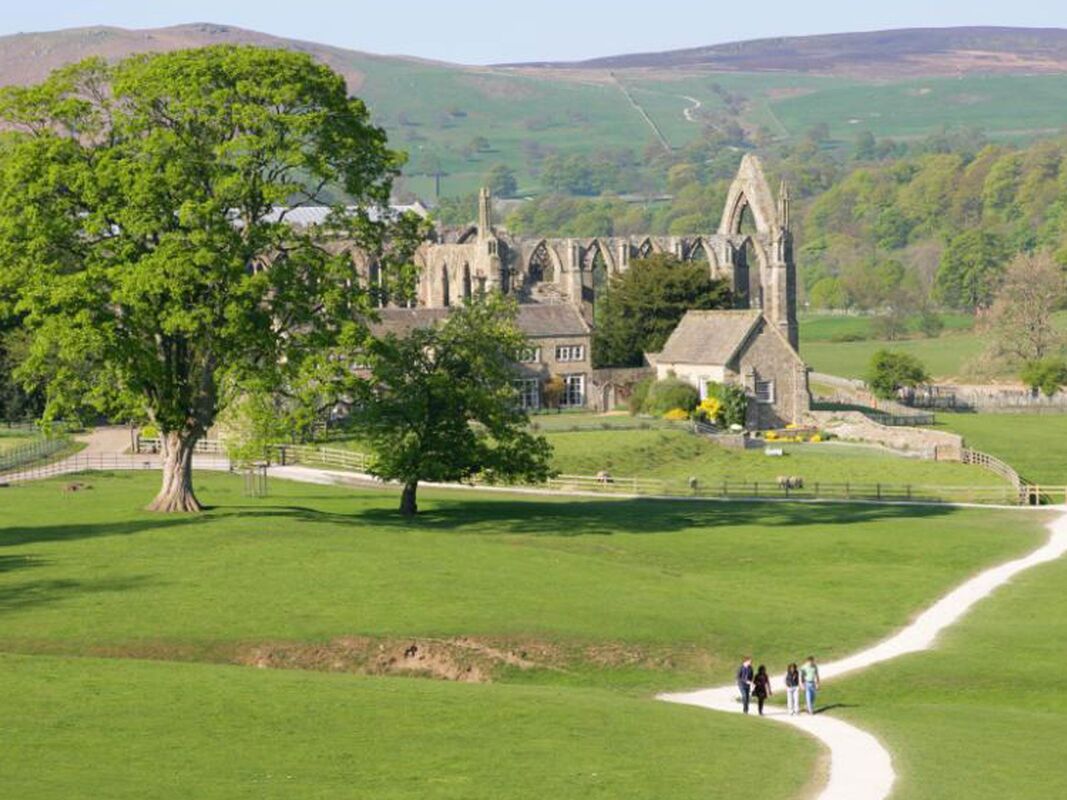Bolton Abbey Estate
|
Is it possible to cross the 60 Bolton Abbey stepping stones across the River Wharfe without smiling and then cheering as you arrive dry-footed at the other side? Those who choose the less risky route on the nearby foot bridge can't help but look down and smile at the stepping stone crossers, usually with a wry 'they're mad' shake of the head.
The stones were once an essential crossing point for workers at the nearby Priory, which is at the heart of the Bolton Abbey Estate (and often referred to as the Abbey). Established in the 12th century, the Priory community grew and prospered, attracting wealthy patrons, enabling investment in local farms and mills which in turn funded the development of the Priory. The Priory was added to over the centuries, and even had to be temporarily abandoned in the early 14th century when Scottish raiders threatened, and some damage was done to the priory. Restoration and building work were still underway until 1539 when King Henry VIII seized the assets of monasteries across the land. |
The Priory was luckier than monasteries in other areas. It was the only church in the area - the nave survived and has continued its use as a parish church. More building work took place during Victorian times including installation of stained glass windows designed by Pugin.
The church was almost closed due to financial difficulties and a declining congregation in the 1970s but a forward-thinking new priest managed to reverse its fortunes, and a major restoration took place in the 1980s, securing the building for the future. The Priory's setting in a bend of the River Wharfe is idyllic, and the ruins are extensive enough for visitors to easily be able to imagine the grandeur of the former building. Ruskin, Turner and Wordsworth were all inspired by the beauty of the Abbey and surrounding landscape. It continues to inspire modern-day artists, writers and photographers. A very blurred photo was even used on the cover of The Cure's Faith album! |



